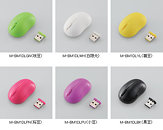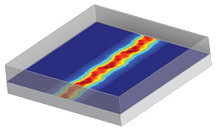Morse Micro Intros New World-Beating Wi-Fi SoC - Smallest, Fastest & Farthest-Reaching
Morse Micro, the world's leading provider of Wi-Fi HaLow chips based on the IEEE 802.11ah specification, has announced the launch of its highly anticipated second-generation MM8108 System-on-Chip (SoC). Building on the success of the first-generation MM6108 SoC, the MM8108 offers even better performance in all key areas of range, throughput, and power efficiency while also reducing the cost, effort, and time to bring the next generation of Wi-Fi HaLow enabled products to market.
The MM8108 delivers class-leading data rates of up to 43.33 Mbps using world-first sub-GHz 256-QAM modulation at an 8 MHz bandwidth, making it ideal for a range of applications in agricultural, mining, industrial, home, and city environments. Its integrated 26dBm power amplifier (PA) with exceptional power efficiency, and low-noise amplifier (LNA) ensure exceptional performance and enable global regulatory certification without the need for external Surface Acoustic Wave (SAW) filters. The exceptional power efficiency significantly extends battery life and enables the uptake of solar-powered Wi-Fi HaLow connected cameras and IoT devices.
The MM8108 delivers class-leading data rates of up to 43.33 Mbps using world-first sub-GHz 256-QAM modulation at an 8 MHz bandwidth, making it ideal for a range of applications in agricultural, mining, industrial, home, and city environments. Its integrated 26dBm power amplifier (PA) with exceptional power efficiency, and low-noise amplifier (LNA) ensure exceptional performance and enable global regulatory certification without the need for external Surface Acoustic Wave (SAW) filters. The exceptional power efficiency significantly extends battery life and enables the uptake of solar-powered Wi-Fi HaLow connected cameras and IoT devices.



















